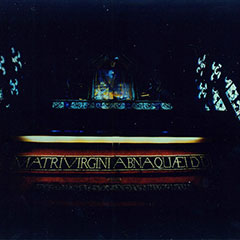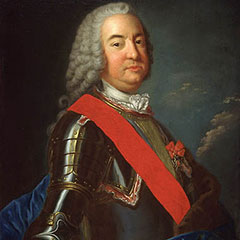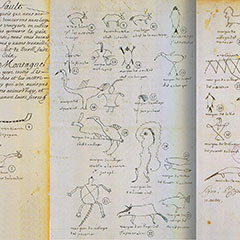Peace and Allegiance
In 1718, war broke out between the Abenakis and the British in New England. The Marquis de Vaudreuil, Governor of New France, met with the Abenaki chiefs and warriors at the mission on the Saint-François River. He wanted to discuss their needs and territorial boundaries. The French and the Abenakis then embarked on several years of military expeditions against New England. The British, for their part, destroyed the French missions in their area.
In 1726, the British and the Abenakis signed a peace treaty in Boston, which was ratified in 1728 (Treaty of Boston). The mission on the Saint-François River took in war-weary survivors from Narantsouak (Norridgewock, Maine) and Pentagöuet (Castine, Maine). However, fighting resumed between the French and British crowns in 1744. The Abenakis took part in destructive attacks and the capture of numerous British soldiers in New England. Peace returned in 1748. The Abenakis took advantage of the break in the hostilities to show their allegiance to France, with the Jesuit Father Aubery. They sent a wampum belt to Notre-Dame-de-Chartres Cathedral to demonstrate their faith in the Virgin. The belt was made of 11 000 beads, one for each member of the Nation. To thank the Abenakis, the Chapter of Chartres sent them a silver statue of the Virgin, which was a replica of the one on display in the crypt of the French cathedral. Apparently, the statue given to the Abenakis was stolen by Rogers and his men when they attacked the fortified village in 1759.




